Abstract
Problem behavior often prevents community integration of people with developmental disabilities. Therefore, we evaluated a multicomponent approach for remediating problem behavior in public community settings (specifically, supermarkets). We selected treatments based on hypotheses about the variables controlling the problem behavior (hypothesis-driven model). The multicomponent intervention included choice making, embedding, functional communication training, building tolerance for delay of reinforcement, and presenting discriminative stimuli for nonproblem behavior. Treatment progress was monitored using measures of latency and task completion rather than traditional measures of frequency and time sampling. Results showed substantial increases in task completion and duration of time spent in supermarkets without problem behavior. Outcomes were socially validated by group-home staff and cashiers. We discuss how the intervention approach taken can resolve some of the issues involved in assessing, measuring, and treating problem behavior in the community.
Full text
PDF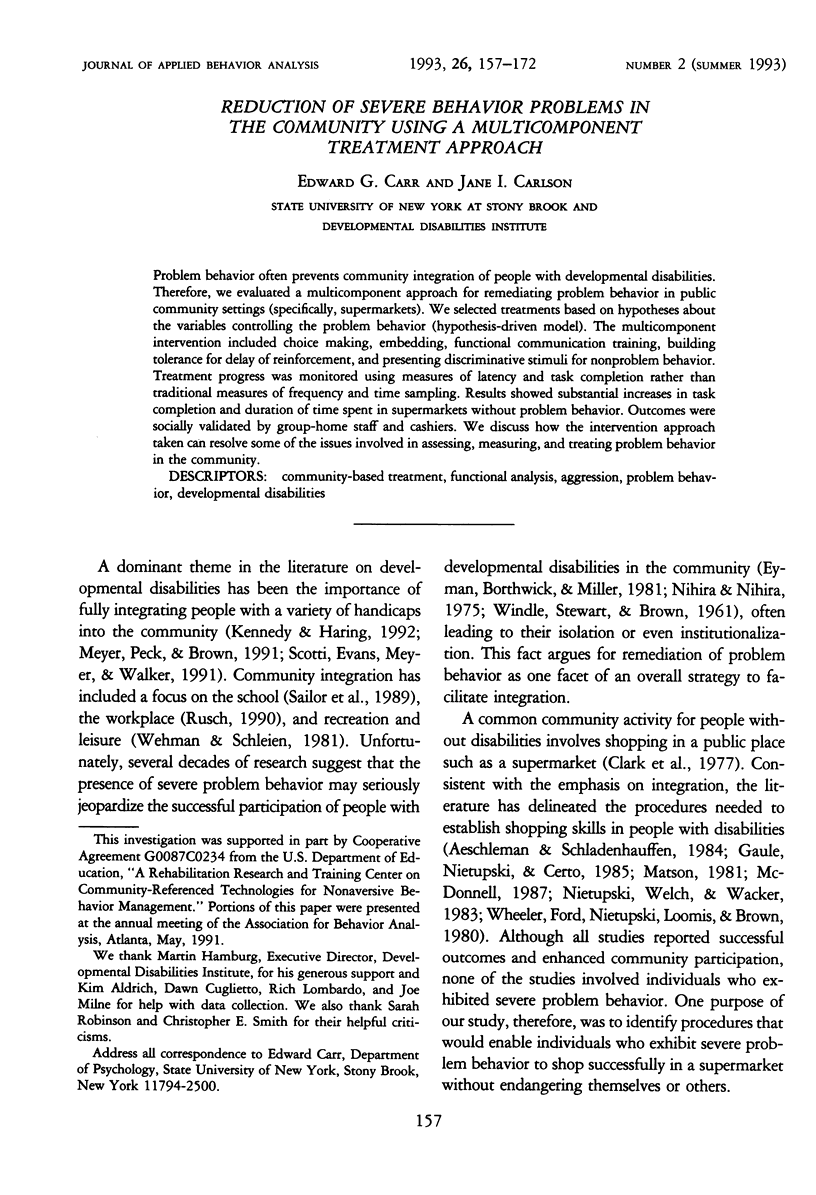
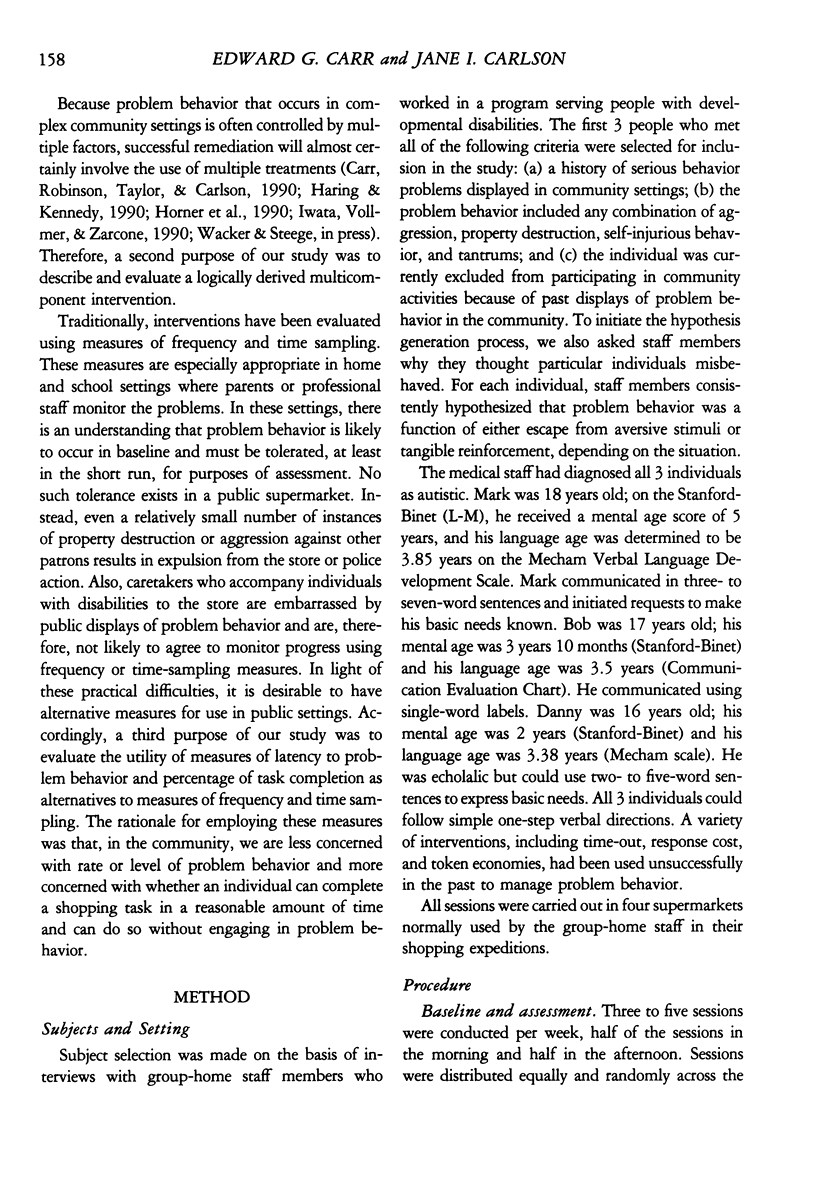
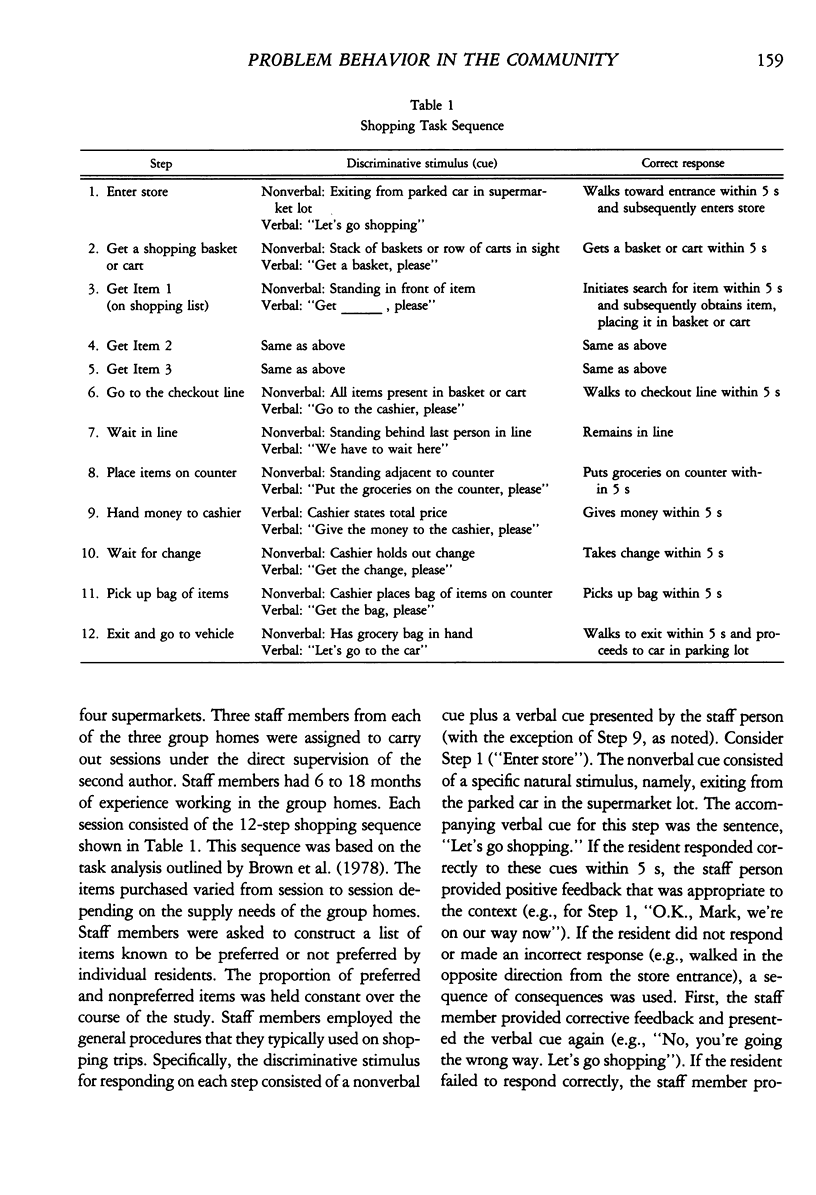
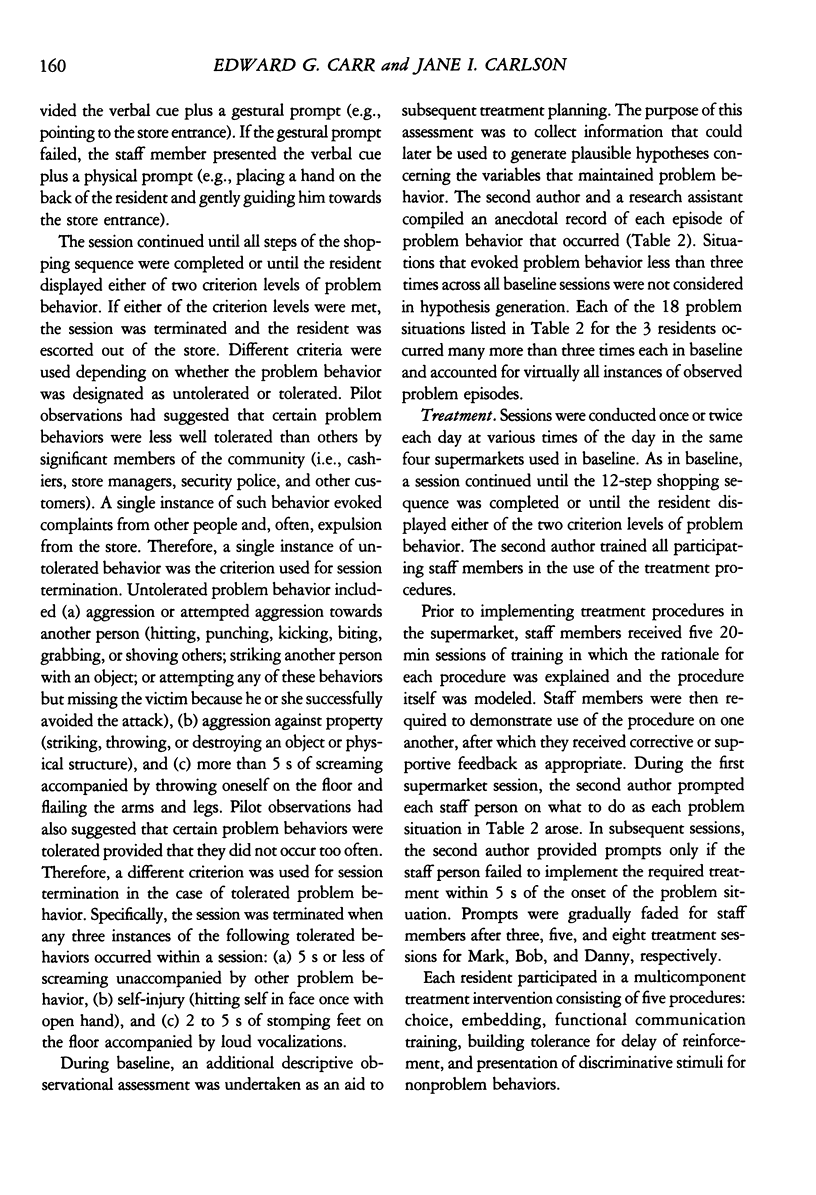
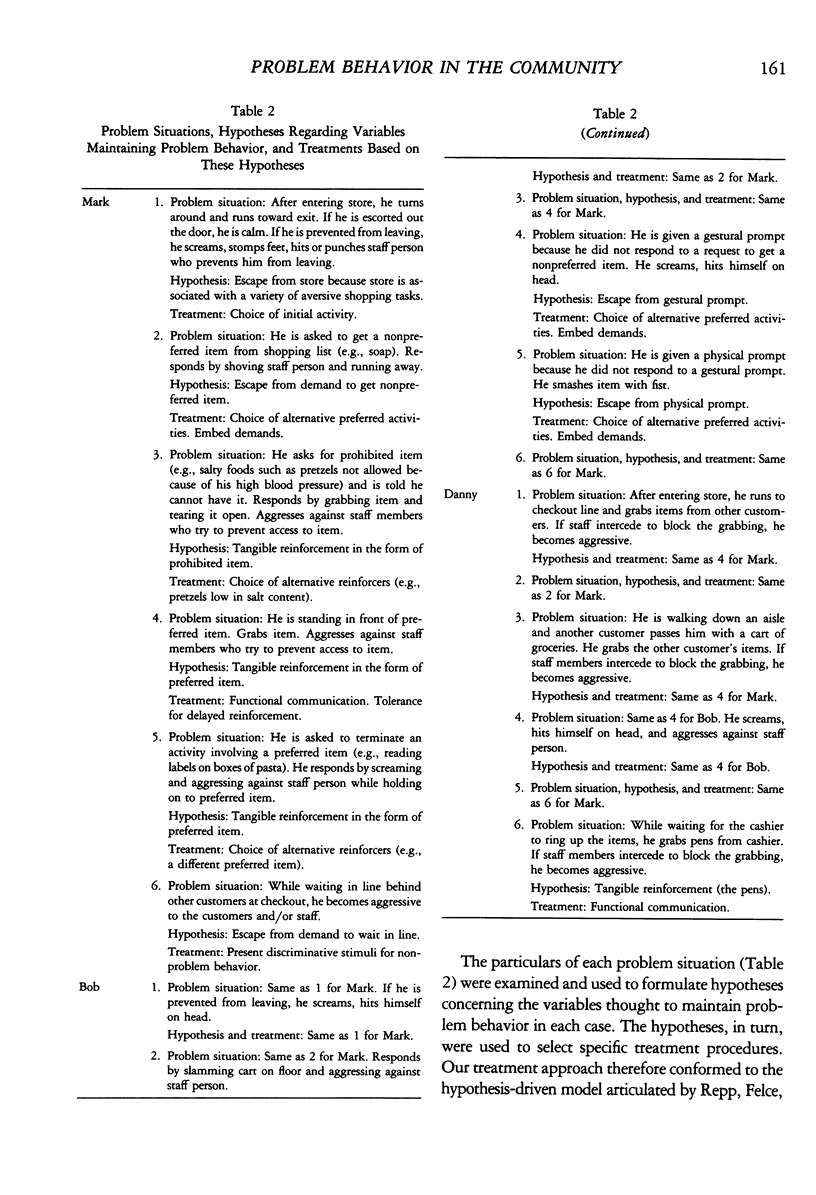

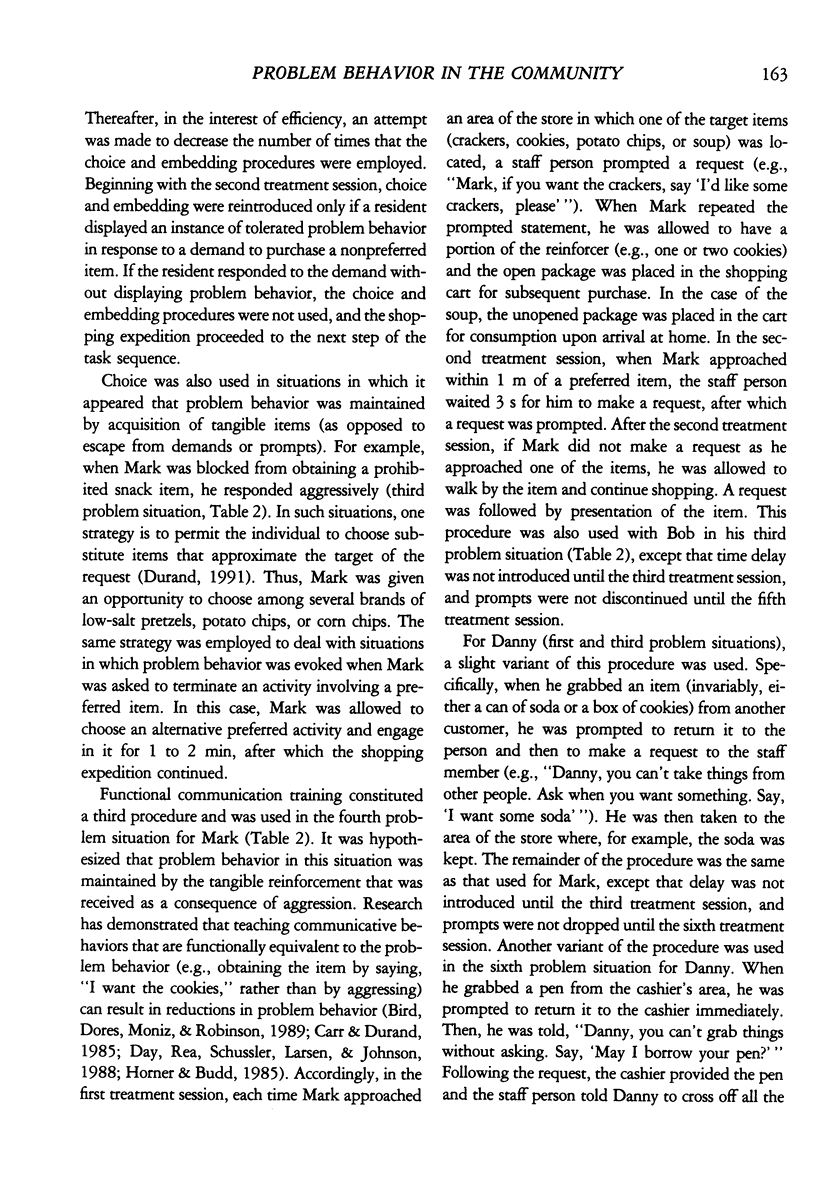
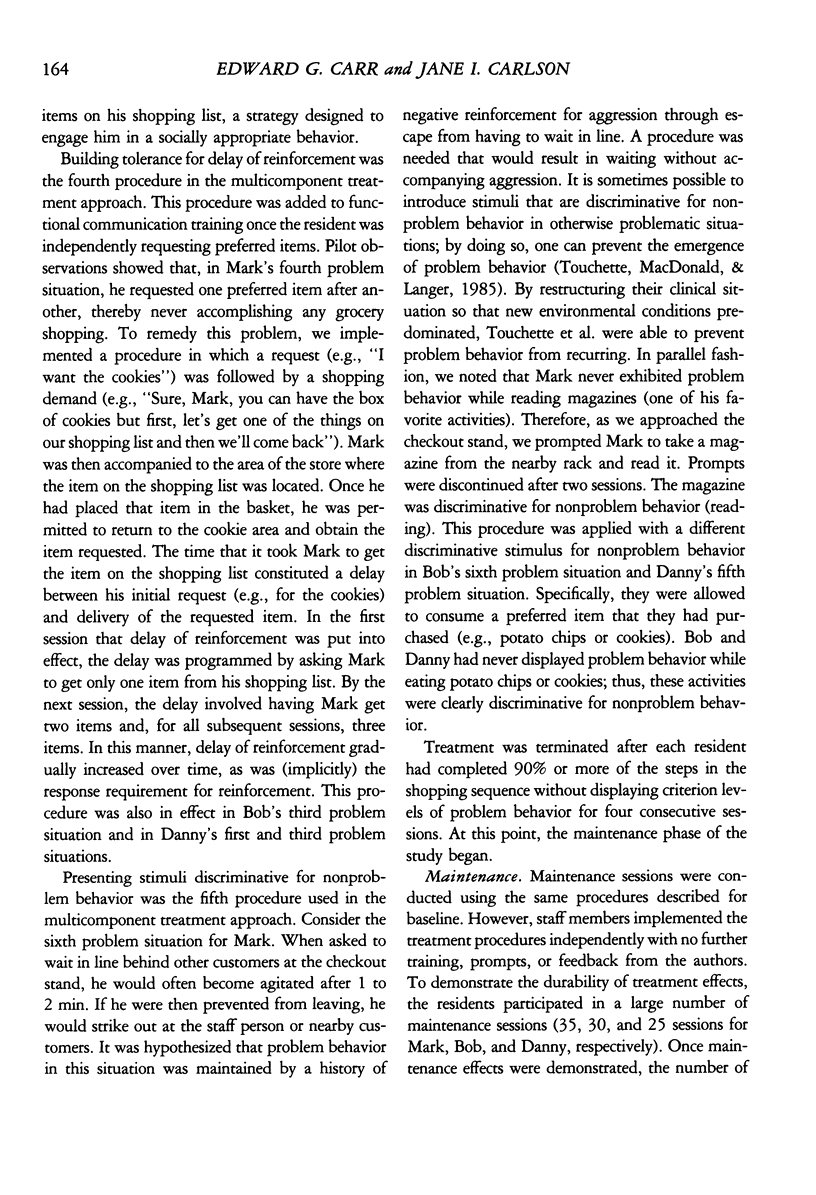
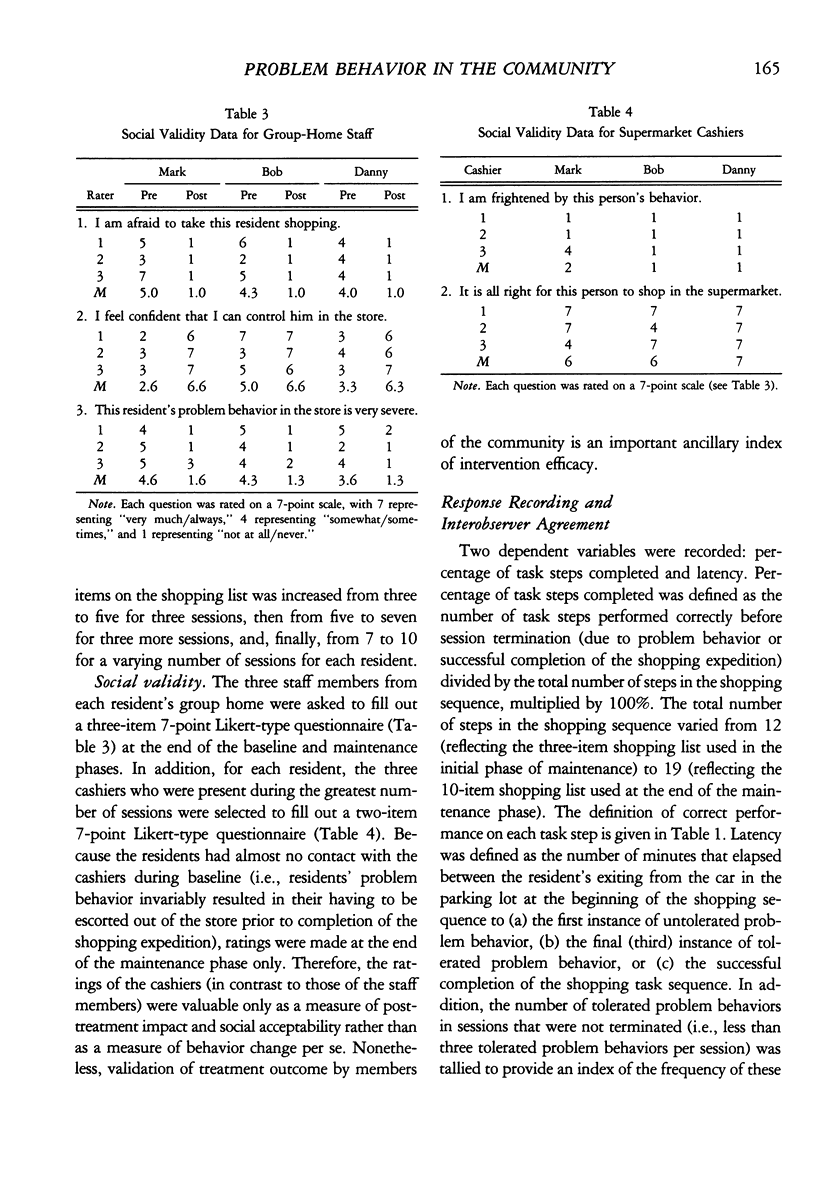
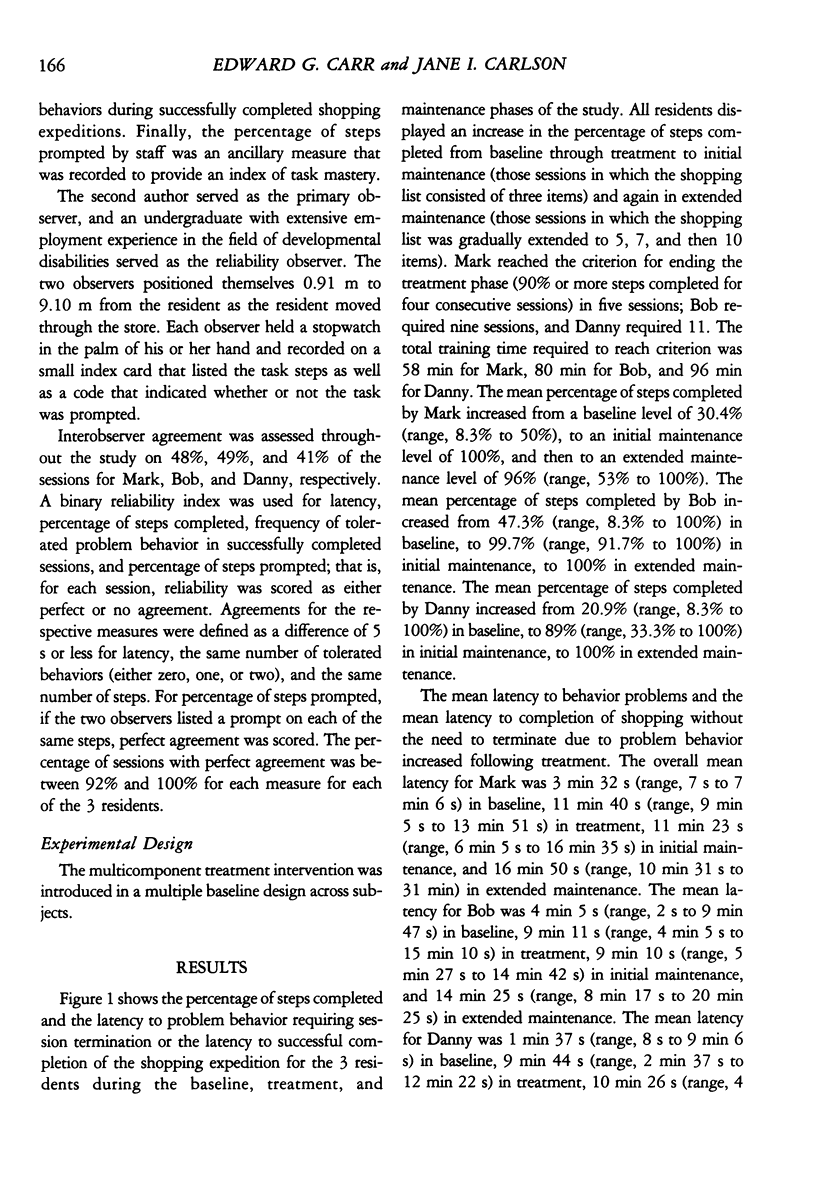
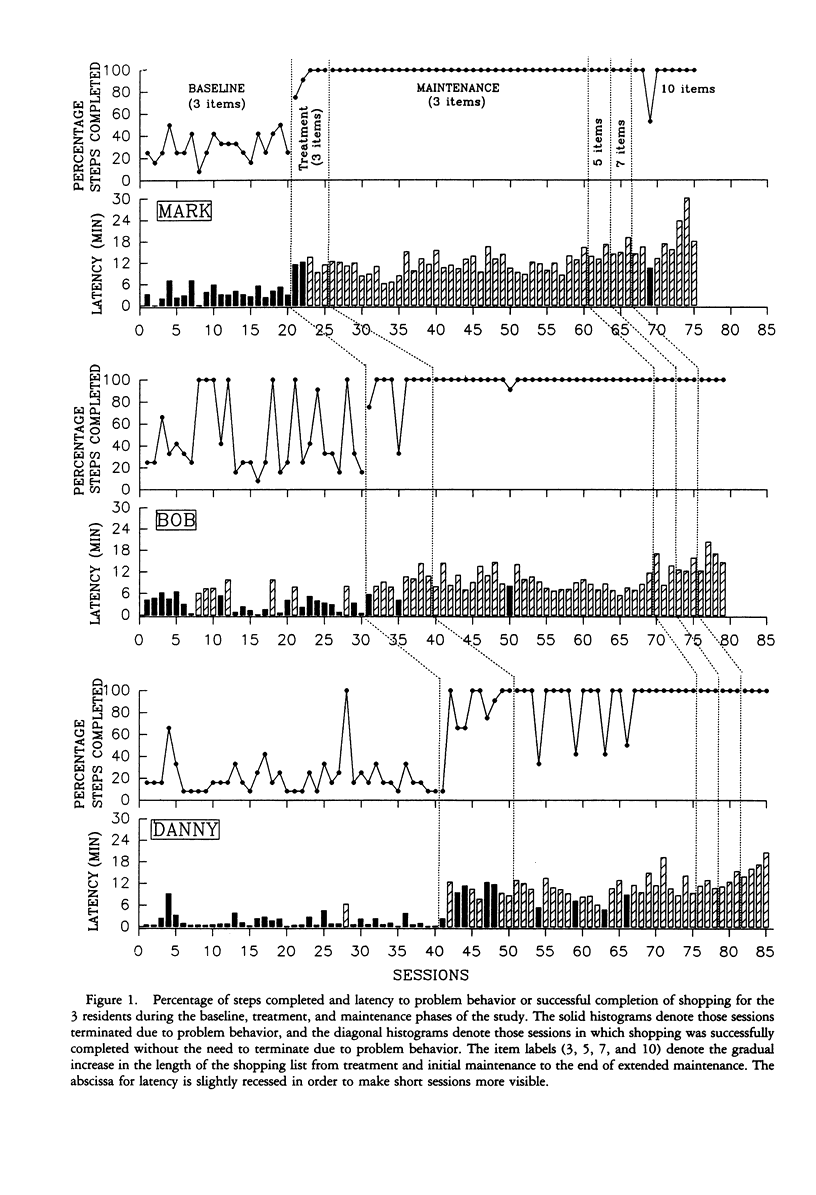
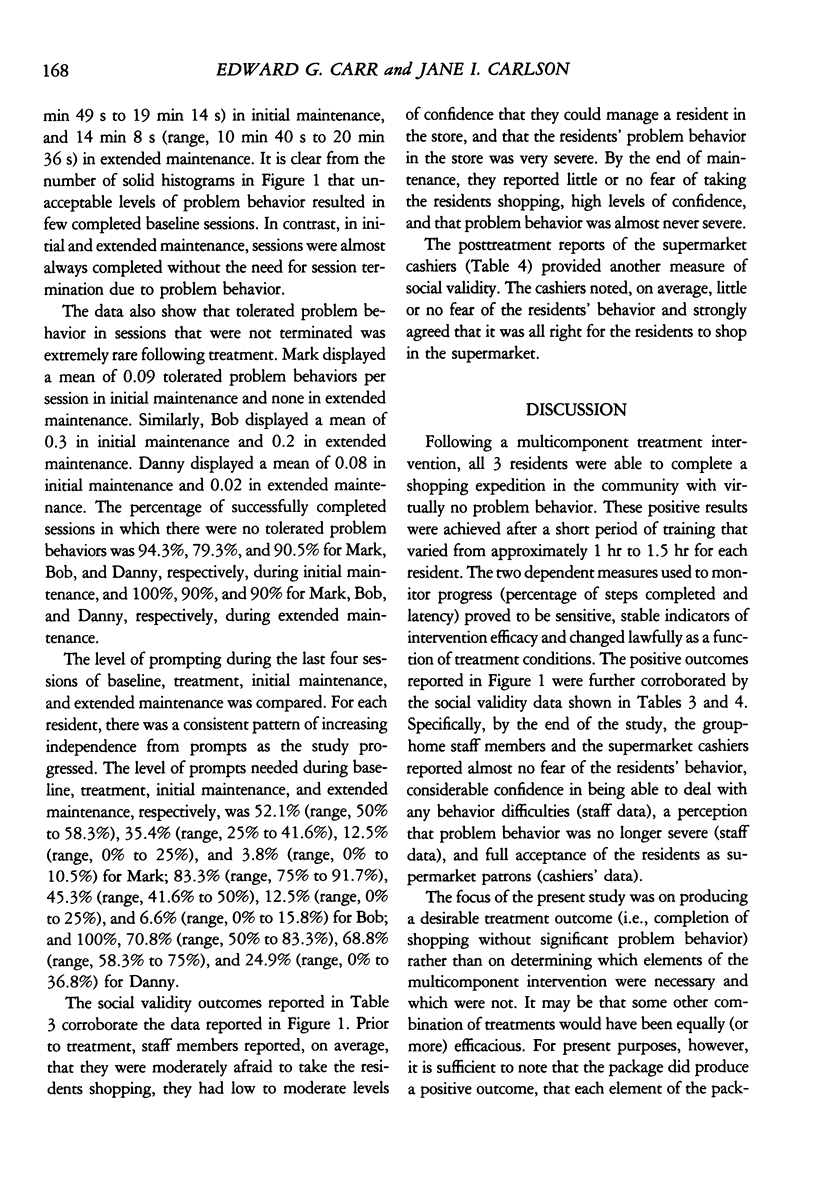
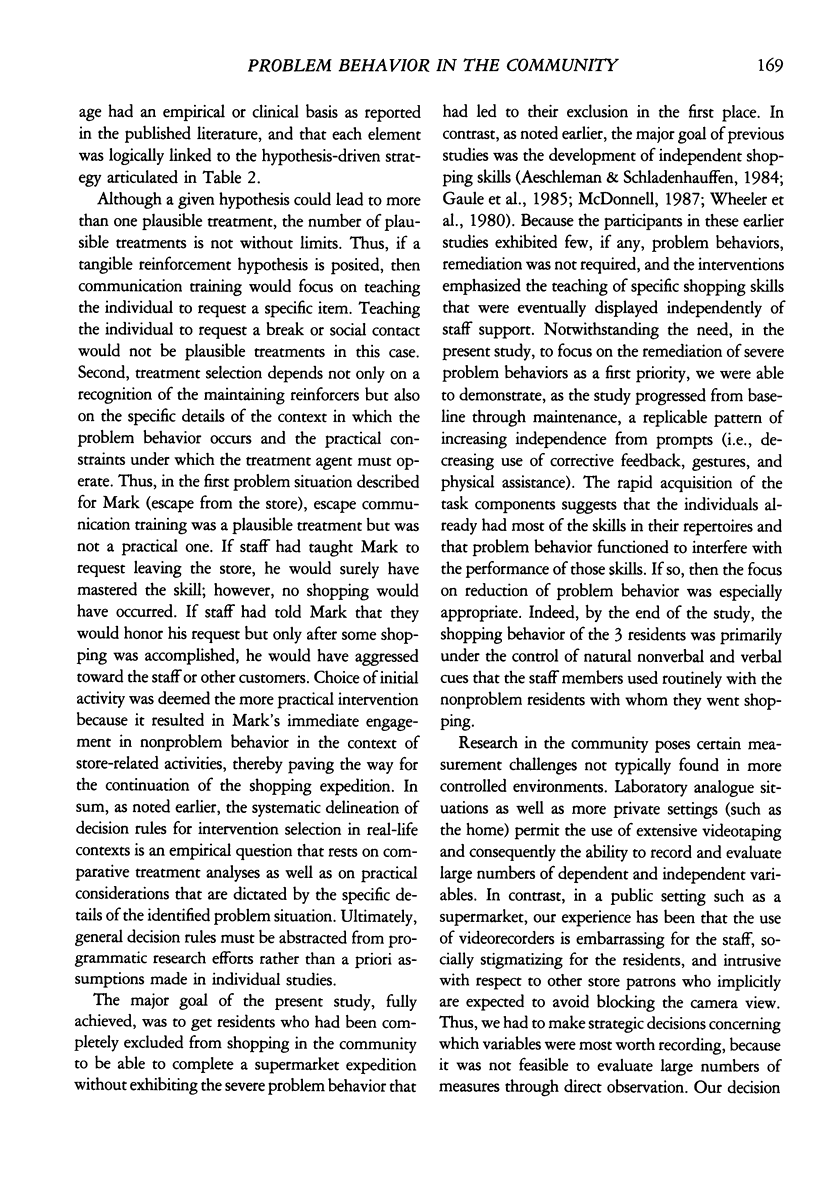
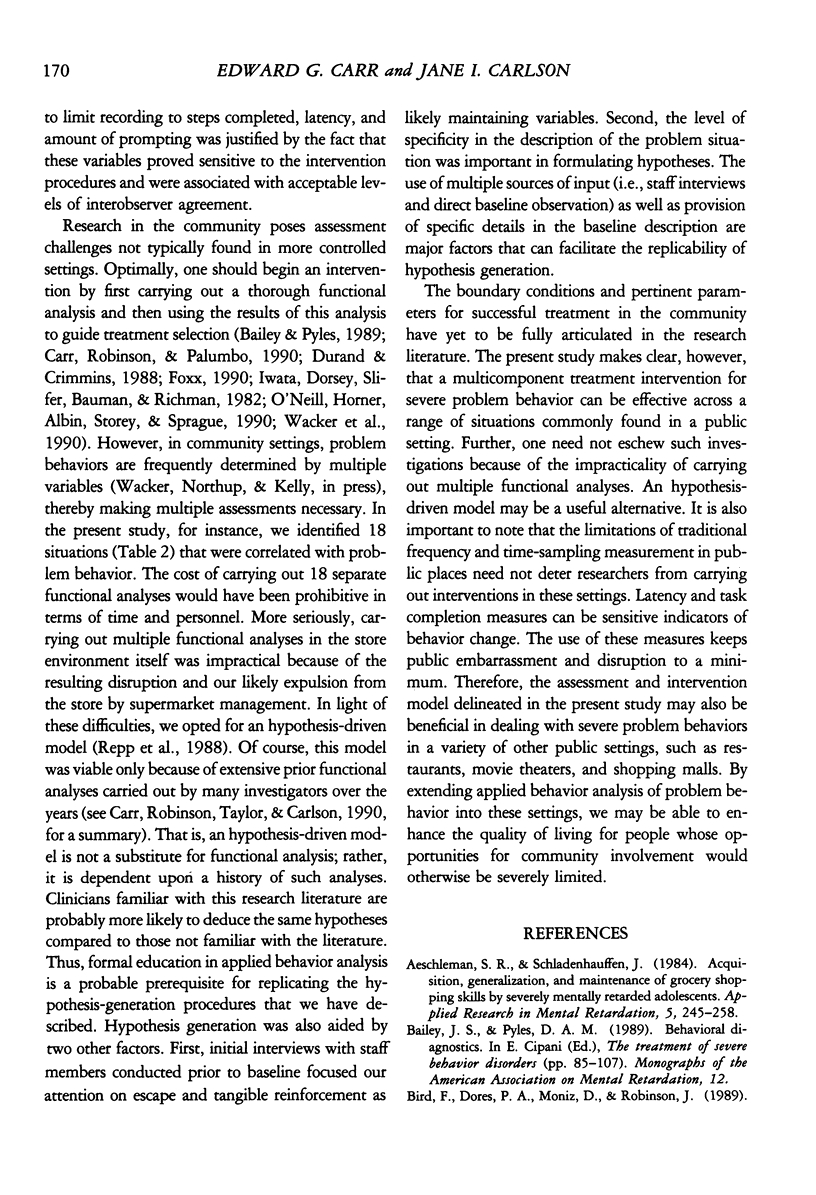
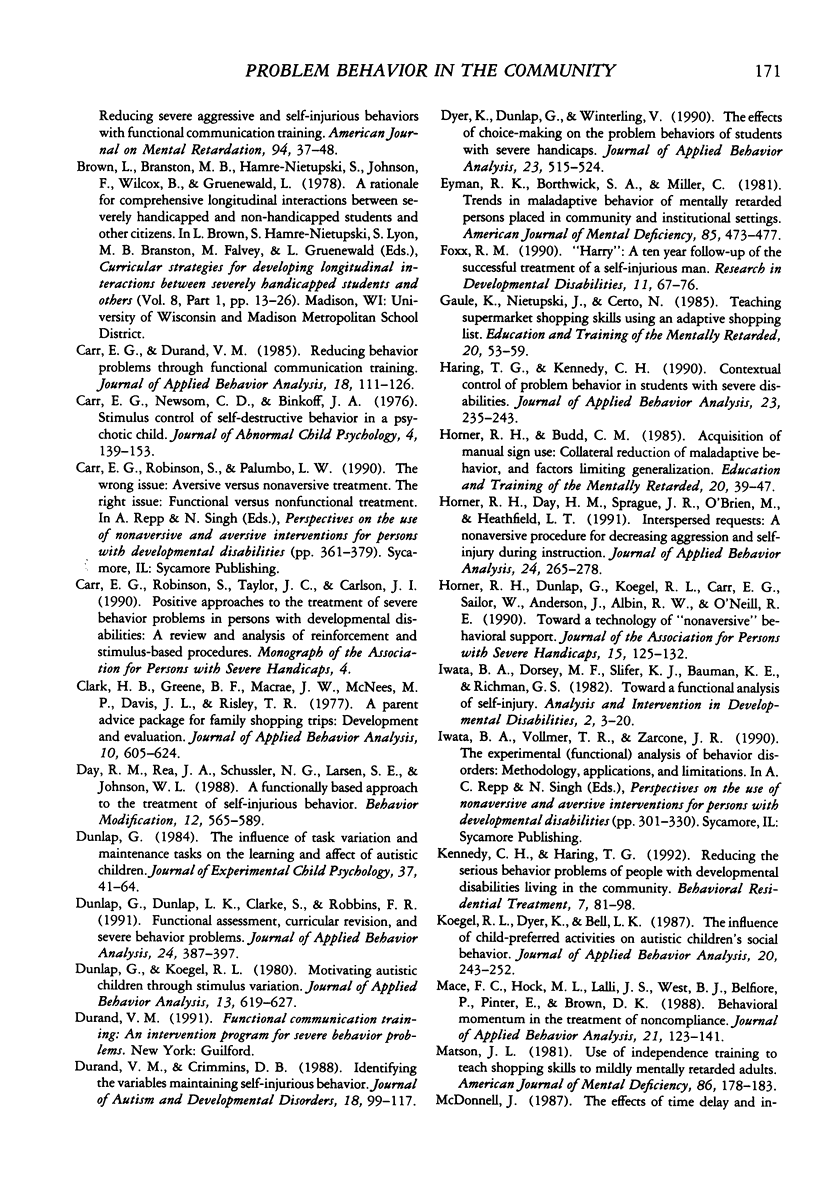
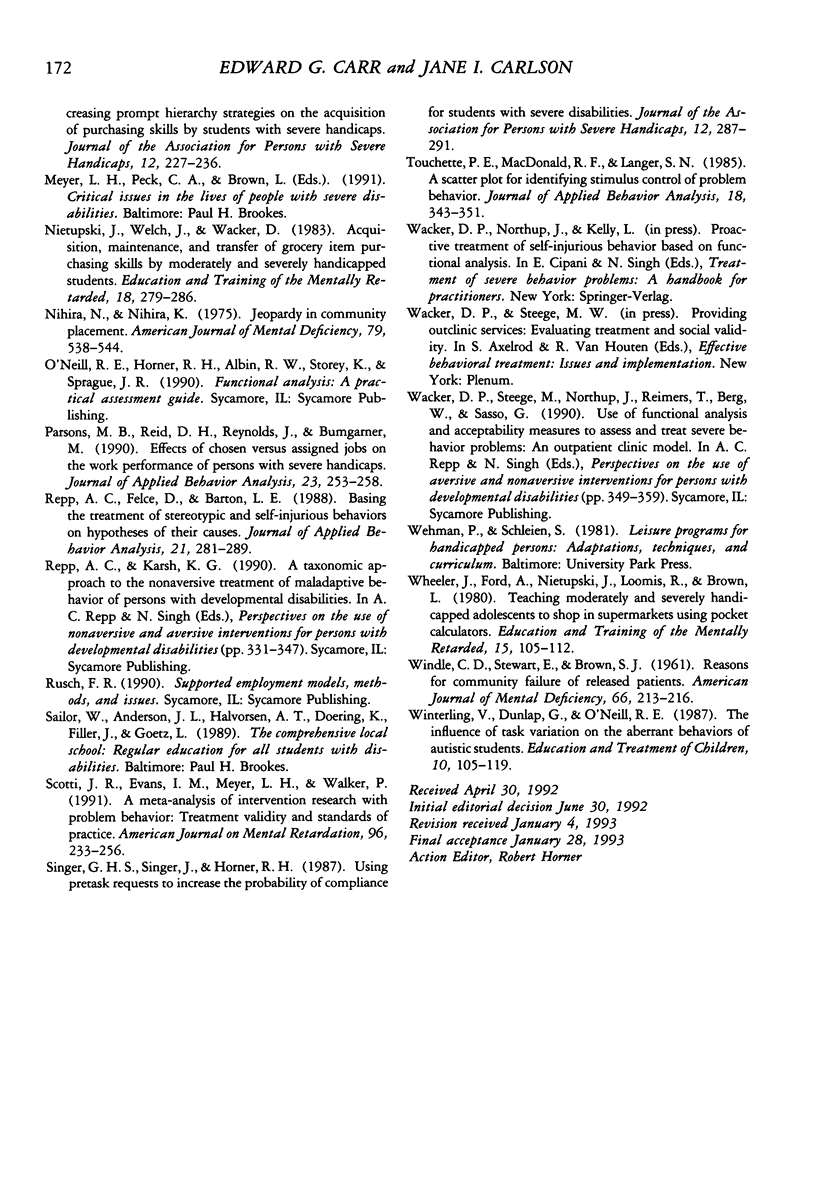
Selected References
These references are in PubMed. This may not be the complete list of references from this article.
- Aeschleman S. R., Schladenhauffen J. Acquisition, generalization and maintenance of grocery shopping skills by severely mentally retarded adolescents. Appl Res Ment Retard. 1984;5(2):245–258. doi: 10.1016/s0270-3092(84)80005-3. [DOI] [PubMed] [Google Scholar]
- Carr E. G., Durand V. M. Reducing behavior problems through functional communication training. J Appl Behav Anal. 1985 Summer;18(2):111–126. doi: 10.1901/jaba.1985.18-111. [DOI] [PMC free article] [PubMed] [Google Scholar]
- Carr E. G., Newsom C. D., Binkoff J. A. Stimulus control of self-destructive behavior in a psychotic child. J Abnorm Child Psychol. 1976;4(2):139–153. doi: 10.1007/BF00916518. [DOI] [PubMed] [Google Scholar]
- Clark H. B., Greene B. F., Macrae J. W., McNees M. P., Davis J. L., Risley T. R. A parent advice package for family shopping trips: development and evaluation. J Appl Behav Anal. 1977 Winter;10(4):605–624. doi: 10.1901/jaba.1977.10-605. [DOI] [PMC free article] [PubMed] [Google Scholar]
- Day R. M., Rea J. A., Schussler N. G., Larsen S. E., Johnson W. L. A functionally based approach to the treatment of self-injurious behavior. Behav Modif. 1988 Oct;12(4):565–589. doi: 10.1177/01454455880124005. [DOI] [PubMed] [Google Scholar]
- Dunlap G., Kern-Dunlap L., Clarke S., Robbins F. R. Functional assessment, curricular revision, and severe behavior problems. J Appl Behav Anal. 1991 Summer;24(2):387–397. doi: 10.1901/jaba.1991.24-387. [DOI] [PMC free article] [PubMed] [Google Scholar]
- Dunlap G., Koegel R. L. Motivating autistic children through stimulus variation. J Appl Behav Anal. 1980 Winter;13(4):619–627. doi: 10.1901/jaba.1980.13-619. [DOI] [PMC free article] [PubMed] [Google Scholar]
- Dunlap G. The influence of task variation and maintenance tasks on the learning and affect of autistic children. J Exp Child Psychol. 1984 Feb;37(1):41–64. doi: 10.1016/0022-0965(84)90057-2. [DOI] [PubMed] [Google Scholar]
- Durand V. M., Crimmins D. B. Identifying the variables maintaining self-injurious behavior. J Autism Dev Disord. 1988 Mar;18(1):99–117. doi: 10.1007/BF02211821. [DOI] [PubMed] [Google Scholar]
- Dyer K., Dunlap G., Winterling V. Effects of choice making on the serious problem behaviors of students with severe handicaps. J Appl Behav Anal. 1990 Winter;23(4):515–524. doi: 10.1901/jaba.1990.23-515. [DOI] [PMC free article] [PubMed] [Google Scholar]
- Eyman R. K., Borthwick S. A., Miller C. Trends in maladaptive behavior of mentally retarded persons placed in community and institutional settings. Am J Ment Defic. 1981 Mar;85(5):473–477. [PubMed] [Google Scholar]
- Foxx R. M. "Harry": a ten year follow-up of the successful treatment of a self-injurious man. Res Dev Disabil. 1990;11(1):67–76. doi: 10.1016/0891-4222(90)90005-s. [DOI] [PubMed] [Google Scholar]
- Haring T. G., Kennedy C. H. Contextual control of problem behavior in students with severe disabilities. J Appl Behav Anal. 1990 Summer;23(2):235–243. doi: 10.1901/jaba.1990.23-235. [DOI] [PMC free article] [PubMed] [Google Scholar]
- Horner R. H., Day H. M., Sprague J. R., O'Brien M., Heathfield L. T. Interspersed requests: a nonaversive procedure for reducing aggression and self-injury during instruction. J Appl Behav Anal. 1991 Summer;24(2):265–278. doi: 10.1901/jaba.1991.24-265. [DOI] [PMC free article] [PubMed] [Google Scholar]
- Koegel R. L., Dyer K., Bell L. K. The influence of child-preferred activities on autistic children's social behavior. J Appl Behav Anal. 1987 Fall;20(3):243–252. doi: 10.1901/jaba.1987.20-243. [DOI] [PMC free article] [PubMed] [Google Scholar]
- Mace F. C., Hock M. L., Lalli J. S., West B. J., Belfiore P., Pinter E., Brown D. K. Behavioral momentum in the treatment of noncompliance. J Appl Behav Anal. 1988 Summer;21(2):123–141. doi: 10.1901/jaba.1988.21-123. [DOI] [PMC free article] [PubMed] [Google Scholar]
- Matson J. L. Use of independence training to teach shopping skills to mildly mentally retarded adults. Am J Ment Defic. 1981 Sep;86(2):178–183. [PubMed] [Google Scholar]
- Nihira L., Nihira K. Jeopardy in community placement. Am J Ment Defic. 1975 Mar;79(5):538–544. [PubMed] [Google Scholar]
- Parsons M. B., Reid D. H., Reynolds J., Bumgarner M. Effects of chosen versus assigned jobs on the work performance of persons with severe handicaps. J Appl Behav Anal. 1990 Summer;23(2):253–258. doi: 10.1901/jaba.1990.23-253. [DOI] [PMC free article] [PubMed] [Google Scholar]
- Repp A. C., Felce D., Barton L. E. Basing the treatment of stereotypic and self-injurious behaviors on hypotheses of their causes. J Appl Behav Anal. 1988 Fall;21(3):281–289. doi: 10.1901/jaba.1988.21-281. [DOI] [PMC free article] [PubMed] [Google Scholar]
- Scotti J. R., Evans I. M., Meyer L. H., Walker P. A meta-analysis of intervention research with problem behavior: treatment validity and standards of practice. Am J Ment Retard. 1991 Nov;96(3):233–256. [PubMed] [Google Scholar]
- Touchette P. E., MacDonald R. F., Langer S. N. A scatter plot for identifying stimulus control of problem behavior. J Appl Behav Anal. 1985 Winter;18(4):343–351. doi: 10.1901/jaba.1985.18-343. [DOI] [PMC free article] [PubMed] [Google Scholar]
- WINDLE C. D., STEWART E., BROWN S. J. Reasons for community failure of released patients. Am J Ment Defic. 1961 Sep;66:213–217. [PubMed] [Google Scholar]


